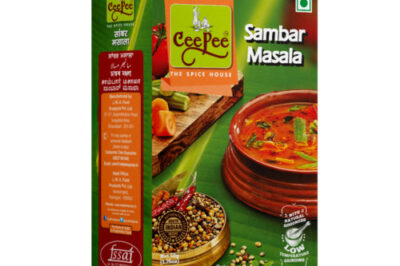North vs South: A Taste Test of India’s Regional Flavors
India is a country renowned for its diverse and rich culinary traditions. The vastness of the nation’s geography and the diversity of its people have given rise to a multitude of regional cuisines, each with its own unique flavors, ingredients, and cooking techniques. Two prominent regional cuisines that often find themselves in the spotlight are North Indian and South Indian cuisines. In this gastronomic exploration, we will delve into the tantalizing flavors of North and South India through a taste test featuring two iconic dishes: Chana Masala from the North and Sambar Masala from the South.
The Battle of Flavors
Chana Masala: North India’s Culinary Marvel
Chana Masala, also known as Chole Masala, is a beloved dish from North India, particularly from the states of Punjab and Haryana. This spicy and tangy chickpea curry is a testament to the robust flavors that define North Indian cuisine.
Ingredients and Preparation
Chana Masala is primarily made with chickpeas (chana) cooked in a tomato-based gravy that’s infused with a blend of aromatic spices. The key ingredients include chickpeas, tomatoes, onions, garlic, ginger, and a melange of spices such as cumin, coriander, garam masala, and chili powder. The dish is often garnished with fresh coriander leaves and served with rice, naan, or roti.
Flavor Profile
The flavor profile of Chana Masala is a delightful balance of spicy, tangy, and slightly sweet notes. The chickpeas soak up the rich and aromatic tomato-based gravy, creating a hearty and satisfying dish. The spices add layers of complexity, making every bite an explosion of flavors on your taste buds.
Sambar Masala: South India’s Culinary Gem
Sambar, on the other hand, is a quintessential South Indian dish, a staple in the states of Tamil Nadu, Karnataka, Kerala, and Andhra Pradesh. It’s a flavorful and tangy lentil stew that’s packed with vegetables and served with rice, idli, dosa, or vada.
Ingredients and Preparation
The base of Sambar is made from pigeon peas (toor dal), tamarind, and a special spice blend called Sambar Masala. The choice of vegetables is extensive, with ingredients like drumsticks, eggplant, okra, and tomatoes being common additions. The spices in Sambar Masala include coriander seeds, fenugreek seeds, red chilies, and asafoetida. The dish is garnished with curry leaves and often tempered with mustard seeds and dried red chilies.
Flavor Profile
Sambar boasts a unique flavor profile with a delightful blend of sourness from tamarind, spiciness from the red chilies, and earthiness from the lentils. The vegetables add various textures and flavors, making each spoonful a medley of tastes. Sambar Masala, with its complex spice blend, plays a pivotal role in giving this dish its distinct South Indian essence.
The Taste Test
Now that we’ve introduced these two iconic dishes, let’s pit them against each other in a taste test showdown.
Chana Masala vs. Sambar Masala
Flavor Complexity
- Chana Masala: This North Indian dish offers a rich and complex flavor profile. The combination of spices, including cumin, coriander, and garam masala, creates layers of taste that unfold with each bite. The tanginess of tomatoes balances the heat from the spices, making it a harmonious blend of flavors.
- Sambar: South Indian Sambar is no less in complexity. The intricate spice mix in Sambar Masala elevates this dish to a culinary masterpiece. The use of tamarind provides a tangy kick, and the variety of vegetables adds a diverse range of flavors and textures. The tempered mustard seeds and curry leaves add a unique South Indian touch.
Spice Intensity
- Chana Masala: It’s known for its moderate to high spice level, with a warm and comforting heat that’s balanced by the creamy texture of chickpeas. The chili powder and garam masala provide the dish with its signature spiciness.
- Sambar: While Sambar can vary in spiciness depending on personal preferences, it typically has a milder heat level compared to Chana Masala. The heat here is more subtle, allowing the other flavors to shine.
Versatility
- Chana Masala: This dish can be enjoyed with various Indian breads like naan or roti, as well as with rice. It’s a popular choice for both vegetarian and non-vegetarian meals.
- Sambar: Sambar is a versatile dish that complements a wide range of South Indian staples, including idli, dosa, vada, and rice. Its adaptability makes it a go-to option for many South Indian meals.
Regional Influence
- Chana Masala: Reflecting North India’s culinary heritage, Chana Masala embodies the flavors and traditions of the region. It’s hearty, robust, and resonates with the North’s love for spice.
- Sambar: Sambar, with its vibrant and tangy character, is an embodiment of South India’s culinary diversity. It’s a staple that reflects the South’s emphasis on the use of lentils, tamarind, and a variety of vegetables.
The Verdict
In the Chana Masala vs. Sambar Masala taste test, the choice ultimately comes down to personal preferences. Both dishes are culinary marvels in their own right, showcasing the incredible diversity within Indian cuisine.
If you’re a fan of bold and spicy flavors with a North Indian touch, Chana Masala might be your top pick. On the other hand, if you prefer the complexity of tangy, mildly spiced dishes with a South Indian flair, Sambar Masala could be your go-to comfort food.
One thing is for sure: India’s regional cuisines are a treasure trove of flavors waiting to be explored. Whether you’re in the North or the South, each region has something unique and delicious to offer, making India a true culinary paradise. So, why not embark on your own culinary journey and savor the diverse and tantalizing tastes of this incredible country? Whether you’re enjoying a steaming plate of Chana Masala in Delhi or a bowl of Sambar in Chennai, India’s regional flavors are sure to leave a lasting impression on your taste buds.
